

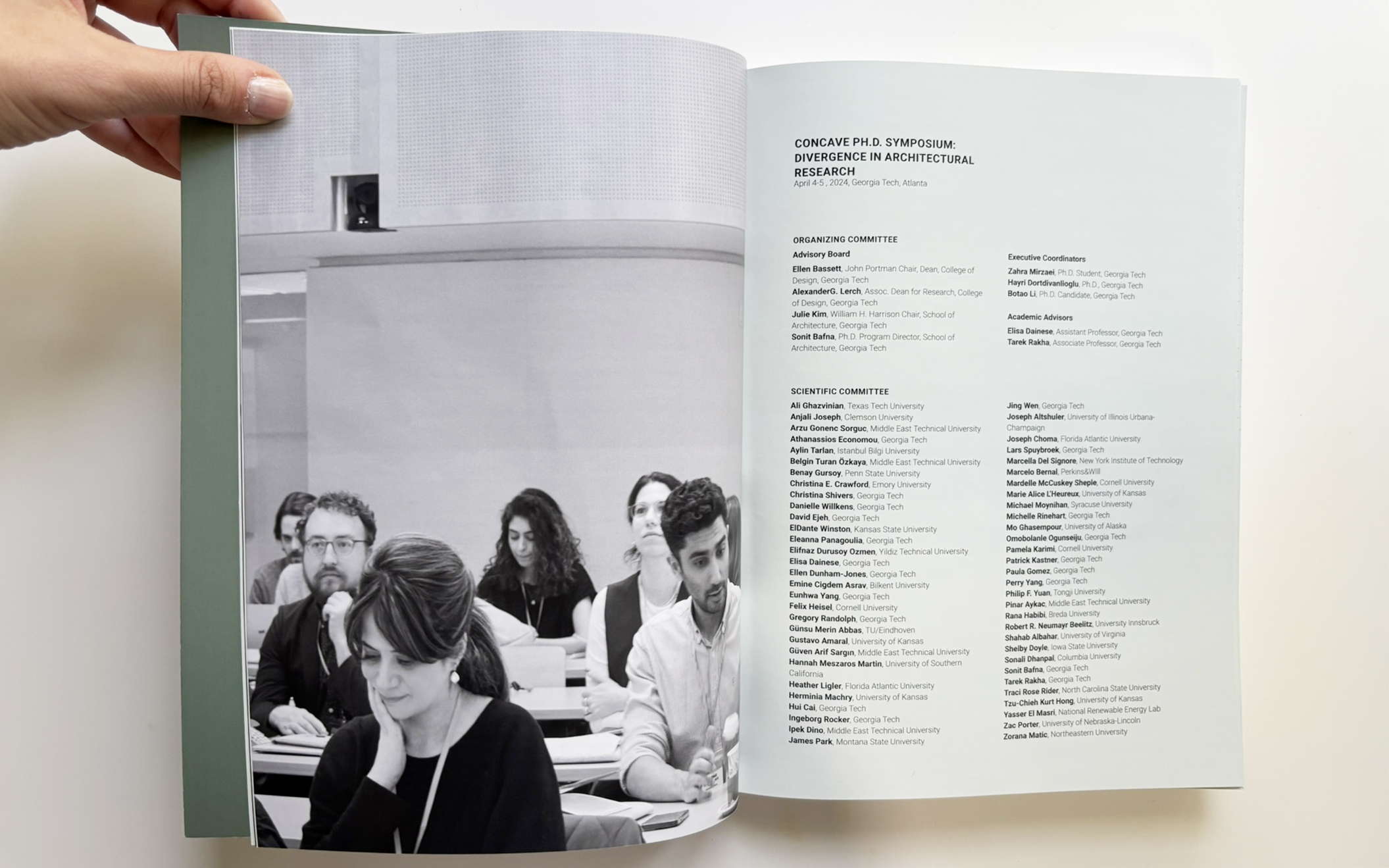
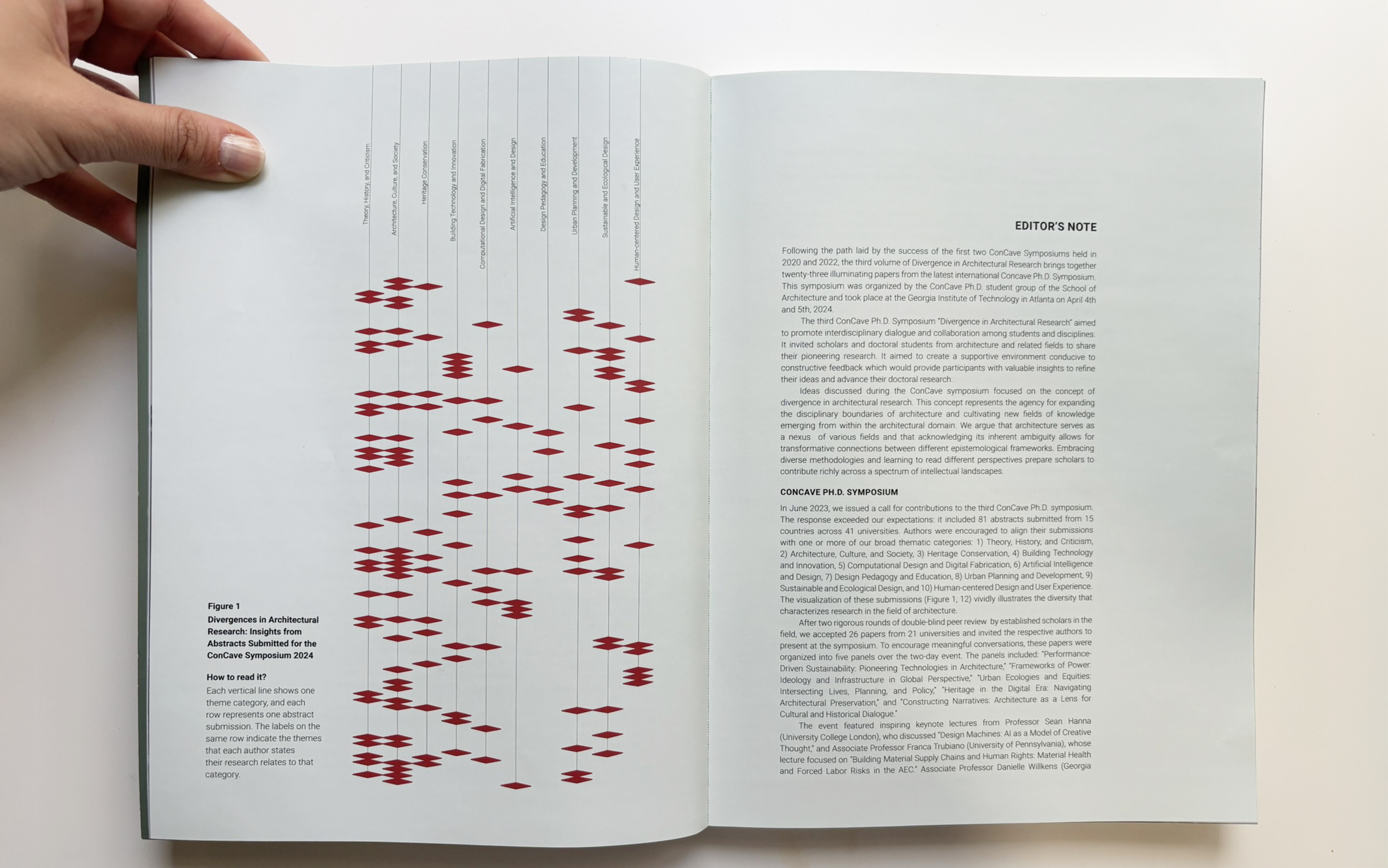

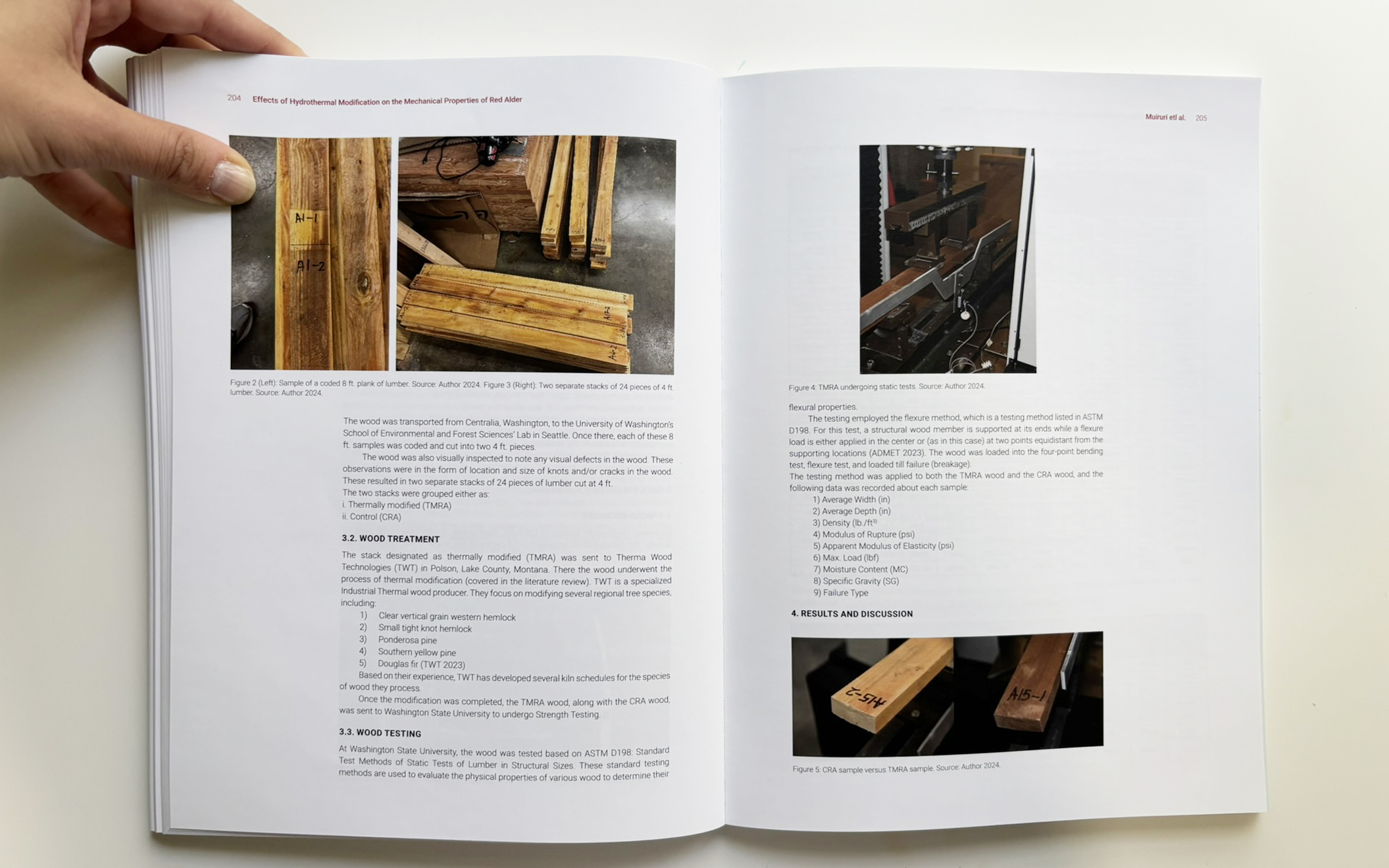

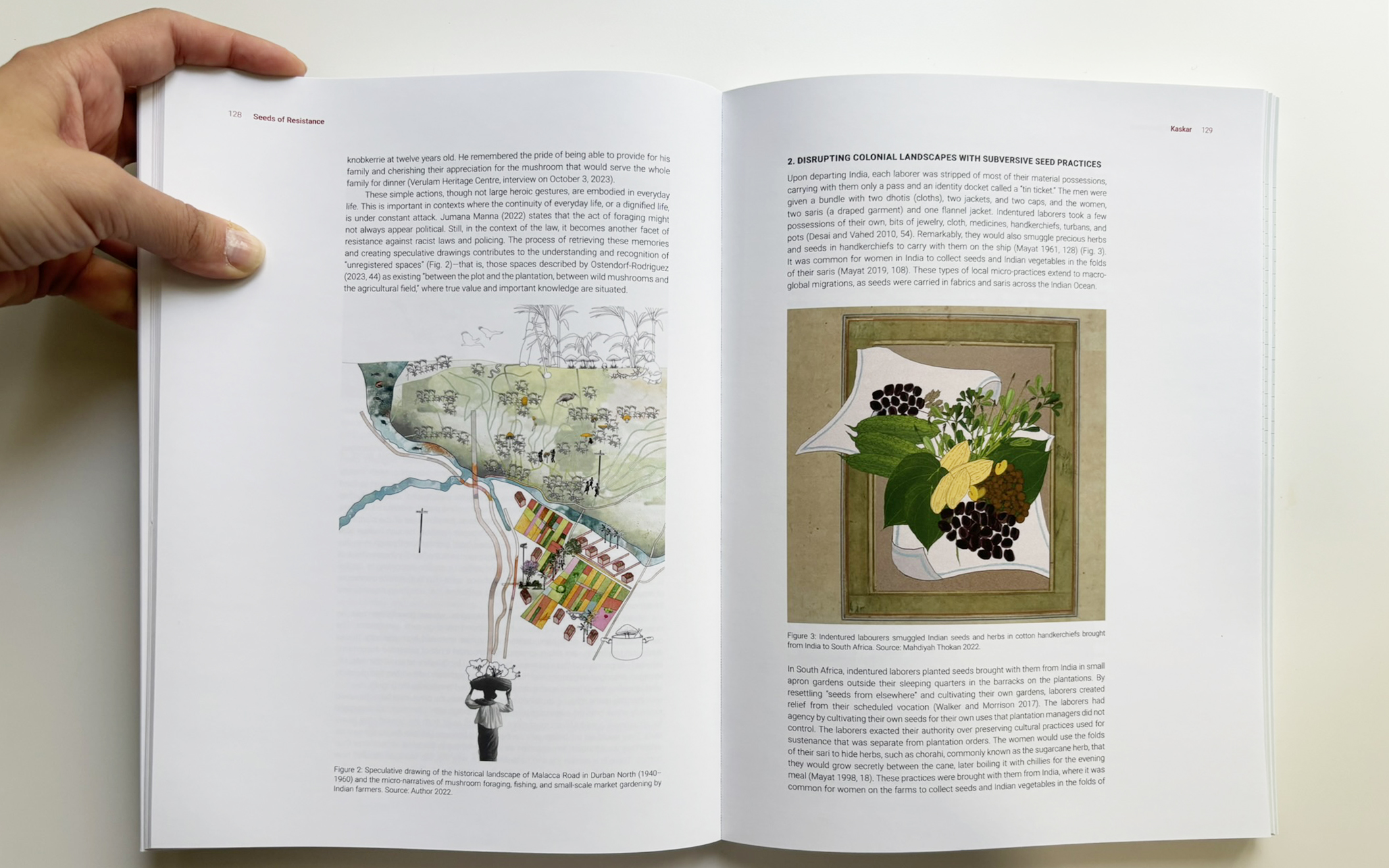

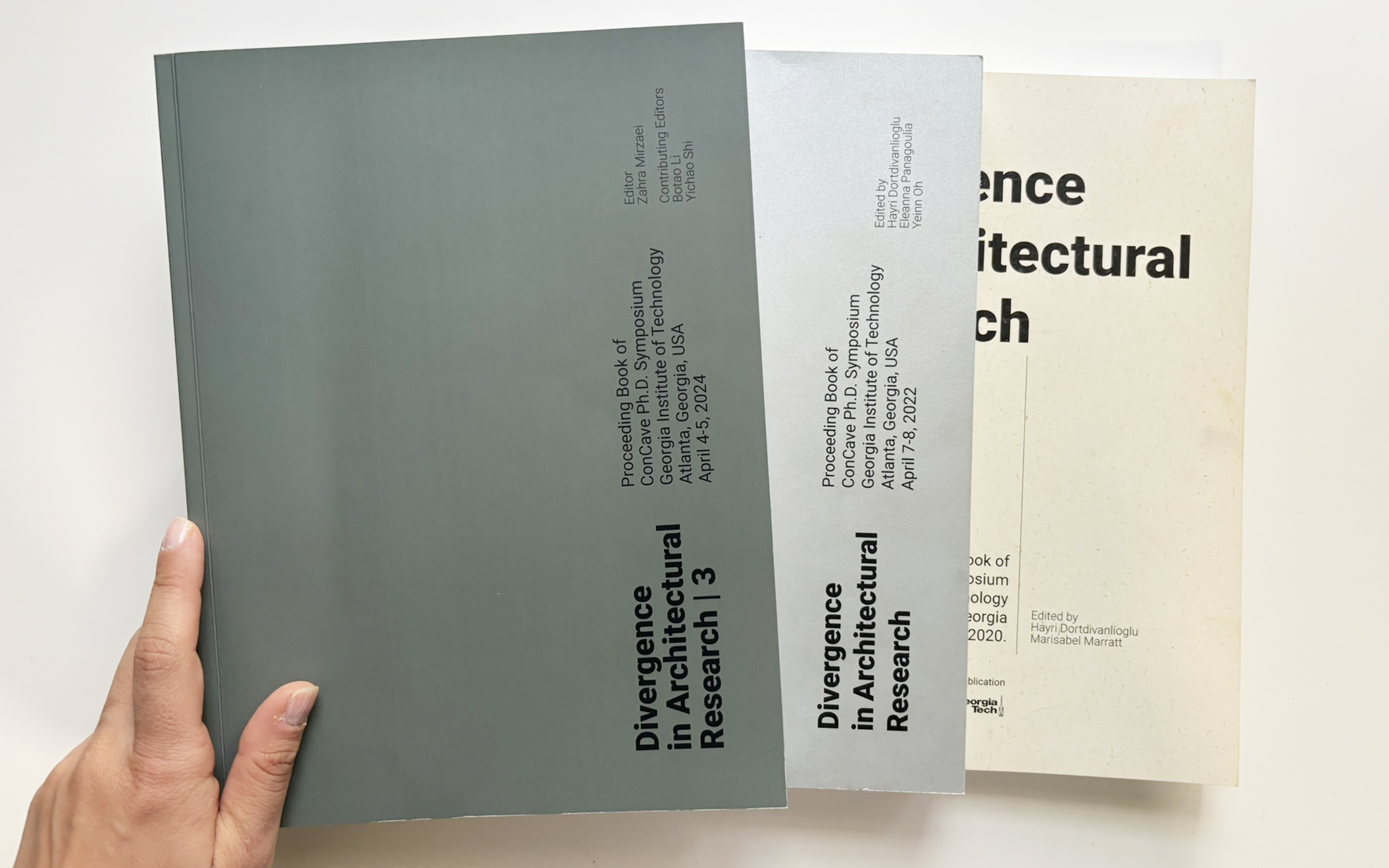
Book Launch:
DIVERGENCE IN ARCHITECTURAL RESEARCH 2025
Proceedings of ConCave Ph.D. Symposium 2024
DOWNLOAD ︎︎︎
Editor:
Zahra Mirzaei
Contributing Editors:
Botao Li
Yichao Shi
School of Architecture Publication
March 2025
ISBN 979-8-9927385-0-6
DOI https://doi.org/10.35090/gatech/77429
DIVERGENCE IN ARCHITECTURAL RESEARCH 2025
Proceedings of ConCave Ph.D. Symposium 2024
DOWNLOAD ︎︎︎
Editor:
Zahra Mirzaei
Contributing Editors:
Botao Li
Yichao Shi
School of Architecture Publication
March 2025
ISBN 979-8-9927385-0-6
DOI https://doi.org/10.35090/gatech/77429
Following the path laid by the success of the first two ConCave Symposiums held in 2020 and 2022, the third volume of Divergence in Architectural Research brings together twenty-three illuminating papers from the latest international ConCave Ph.D. Symposium. This symposium was organized by the ConCave Ph.D. student group of the School of Architecture and took place at the Georgia Institute of Technology in Atlanta on April 4th and 5th, 2024.
The third ConCave Ph.D. Symposium “Divergence in Architectural Research” aimed to promote interdisciplinary dialogue and collaboration among students and disciplines. It invited scholars and doctoral students from architecture and related fields to share their pioneering research. It aimed to create a supportive environment conducive to constructive feedback which would provide participants with valuable insights to refine their ideas and advance their doctoral research.
Ideas discussed during the ConCave symposium focused on the concept of divergence in architectural research. This concept represents the agency for expanding the disciplinary boundaries of architecture and cultivating new fields of knowledge emerging from within the architectural domain. We argue that architecture serves as a nexus of various fields and that acknowledging its inherent ambiguity allows for transformative connections between different epistemological frameworks. Embracing diverse methodologies and learning to read different perspectives prepare scholars to contribute richly across a spectrum of intellectual landscapes.
The ConCave symposium not only sparked dialogue but also cultivated a sense of community among participants. As we prepared the proceedings book, we invited authors to reflect on their experiences and the feedback received throughout the event, and asked them to reflect on how their work resonates with the research presented by others. Through an online inquiry, we encouraged authors to identify two to five papers from the symposium that resonated with their own work—whether confirming, complementing, or offering counterarguments through methodologies, content, or focus areas.
The analysis of their responses revealed an engaging network and dialogue that transcended the thematic categorizations of our panels and enhanced our understanding of the idea of divergence in architecture. This led to numerous and unexpected conversations, with several papers establishing connections with multiple others. Visualized on the book from page 16 to 17 (Figure 2, 16-17), findings highlight how scholarly work in architectural research can foster broader communication and push boundaries across diverse fields. It is through this visualization that we invite our readers to engage in and develop further the conversations and dialogues initiated during the Symposium.
This book has been organized with a focus on the concepts of divergence and dialogue. To prevent any rigid categorization or preconceived notions about papers’ interconnection, we have deliberately arranged the essays in an alphabetic order that follows the authors’ last names. In this way, we invite our readers to explore and navigate the content autonomously, allowing the dialogue and network established by the authors to emerge naturally.
To enhance the reading experience, each paper includes a first page in color that features a graphic guide in the top right corner. A vertical ruler shows the order in which papers appear in the book. A solid line appears when papers present the results of a completed research. A dashed line signifies an ongoing research. When the authors indicated that their work resonates with another paper, opening a dialogue with other works, we present it with a < symbol. Conversely, if other papers aimed to initiate a dialogue with the author’s research, we present those with a > symbol. Two-sided dialogues are represented by a <> symbol .
This graphic guide is designed to inspire our readers to explore the book’s content in a more interactive and engaging way. We suggest that our readers use this guide, folding the first pages to locate key connections and dialogue, and maybe, in further steps, mark the connections that resonate with them using a pen.
Finally, we hope this proceedings book serves as a source of inspiration and sparks meaningful conversations that reach beyond conventional architectural discussions. We are eager to see how these ideas will evolve and reshape architectural research and education through the lens of divergence.
The third ConCave Ph.D. Symposium “Divergence in Architectural Research” aimed to promote interdisciplinary dialogue and collaboration among students and disciplines. It invited scholars and doctoral students from architecture and related fields to share their pioneering research. It aimed to create a supportive environment conducive to constructive feedback which would provide participants with valuable insights to refine their ideas and advance their doctoral research.
Ideas discussed during the ConCave symposium focused on the concept of divergence in architectural research. This concept represents the agency for expanding the disciplinary boundaries of architecture and cultivating new fields of knowledge emerging from within the architectural domain. We argue that architecture serves as a nexus of various fields and that acknowledging its inherent ambiguity allows for transformative connections between different epistemological frameworks. Embracing diverse methodologies and learning to read different perspectives prepare scholars to contribute richly across a spectrum of intellectual landscapes.
The ConCave symposium not only sparked dialogue but also cultivated a sense of community among participants. As we prepared the proceedings book, we invited authors to reflect on their experiences and the feedback received throughout the event, and asked them to reflect on how their work resonates with the research presented by others. Through an online inquiry, we encouraged authors to identify two to five papers from the symposium that resonated with their own work—whether confirming, complementing, or offering counterarguments through methodologies, content, or focus areas.
The analysis of their responses revealed an engaging network and dialogue that transcended the thematic categorizations of our panels and enhanced our understanding of the idea of divergence in architecture. This led to numerous and unexpected conversations, with several papers establishing connections with multiple others. Visualized on the book from page 16 to 17 (Figure 2, 16-17), findings highlight how scholarly work in architectural research can foster broader communication and push boundaries across diverse fields. It is through this visualization that we invite our readers to engage in and develop further the conversations and dialogues initiated during the Symposium.
This book has been organized with a focus on the concepts of divergence and dialogue. To prevent any rigid categorization or preconceived notions about papers’ interconnection, we have deliberately arranged the essays in an alphabetic order that follows the authors’ last names. In this way, we invite our readers to explore and navigate the content autonomously, allowing the dialogue and network established by the authors to emerge naturally.
To enhance the reading experience, each paper includes a first page in color that features a graphic guide in the top right corner. A vertical ruler shows the order in which papers appear in the book. A solid line appears when papers present the results of a completed research. A dashed line signifies an ongoing research. When the authors indicated that their work resonates with another paper, opening a dialogue with other works, we present it with a < symbol. Conversely, if other papers aimed to initiate a dialogue with the author’s research, we present those with a > symbol. Two-sided dialogues are represented by a <> symbol .
This graphic guide is designed to inspire our readers to explore the book’s content in a more interactive and engaging way. We suggest that our readers use this guide, folding the first pages to locate key connections and dialogue, and maybe, in further steps, mark the connections that resonate with them using a pen.
Finally, we hope this proceedings book serves as a source of inspiration and sparks meaningful conversations that reach beyond conventional architectural discussions. We are eager to see how these ideas will evolve and reshape architectural research and education through the lens of divergence.